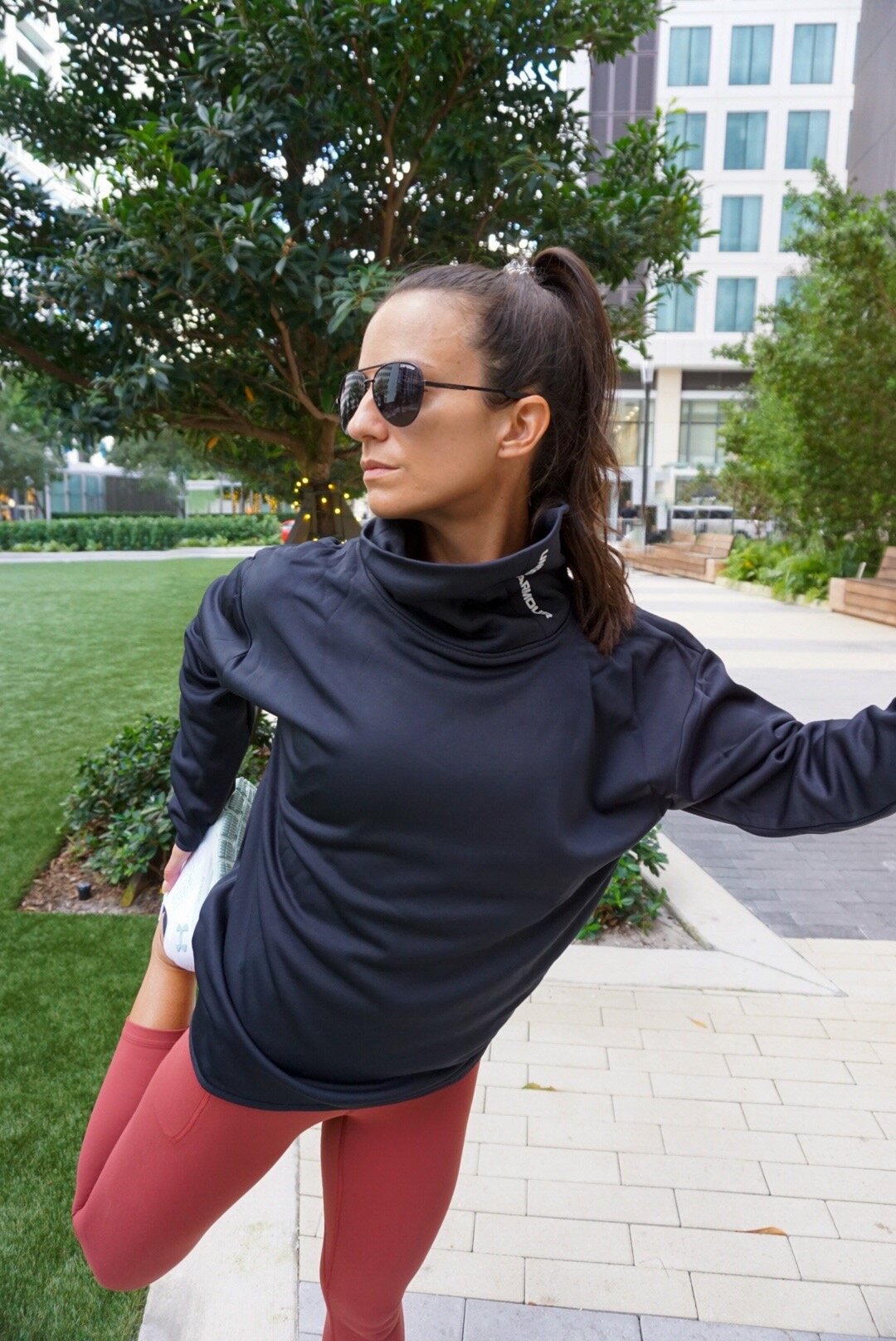Sponsored by Zappos. All opinions are my own.
Runners may struggle with and complain about the hot summer months, but once the winter hits, many are dying to go back to running shirtless in the heat. Although dehydration and fueling is almost as important when it’s cold out, the majority of runners, especially up north, are more concerned with keeping warm during this time of year. Something we can all agree on is that layering up is made much easier when you have stylish gear! It’s all about the right materials for every piece of clothing we wear and of course the best shoes to log as many miles as possible as we train for our spring races.
Have you tried Under Armour’s HOVR Sonic 3 yet? If not, I highly recommend this pair for all different types of runs. I personally have been using them since the summer for my long runs. I’ve been taking advantage of almost all of Under Armour’s comfortable running gear, which is available at Zappos. I find everything I need for all of my running needs—tops, bottoms, shoes and accessories. As a rewards member I get free expedited shipping—most of my orders come in one day! One of the best perks is getting free returns for up to 365 days. I highly recommend becoming part of the Zappos family if you are looking for a one-stop shop with the best customer service.
Stay Connected to Your Running Goals
One of the most impressive features of my new Under Armour HOVR Sonic 3 is its power to connect via Bluetooth to the Map My Run app and track all of your run data. I find this addition to be much more accurate than the information we get from our watches. It’s basically a built-in foot pod with advanced technology. This feature also allows you to get coaching on how to improve mechanics such as your cadence, step length, and pace. It’s the most detailed data without any device needed!
Of course, since I’m aiming for a sub-3 marathon, one of my top priority goals is to improve my pace. This means I need to focus on this piece of data when it’s most important. I make sure to schedule a couple of speed sessions every week and dial into my prescribed paces. Then on the rest of my runs I focus more on running by ‘feeling’ so I can feel fully recovered for those important workouts. The HOVR Sonic 3 have been a staple for my long runs since they are light, have amazing energy return, and supportive enough to handle a variety of paces without leaving my feet sore.
More Than Just Running
Over the years I’ve learned that to improve my running performance I need to do more than just run. I’ve had to strategically create a schedule that includes other cross training activities like strength training, jump rope, and cycling to build up endurance and muscle power in every single part of my body. This also allows me to recover more quickly from my intense runs. Since I move so much, I always opt for clothes that are flexible enough to handle everything. I fell in love with the Under Armour Meridian Crop leggings from the start! They are made with super soft material and are like a second skin—they move with my body with a compressive-like feel. These are great for running in the Miami heat, since they are moisture-wicking and stay dry and light, even for long runs. It pairs perfectly with the Knockout Tank that’s also moisture wicking and fitted-yet-breathable.
What about when it’s cold in Miami?! Yes, we do get some chilly days in the winter time—and no, I’m not a fan! Even when it’s in the 60s you will catch me in a big comfortable sweater, like the Under Armour Fleece Funnel Neck. It’s been the best addition to my warm-up routine on cold morning runs and even better post-run when I want nothing else but to feel warmth. It dries extremely fast and is light enough for long distances. Zappos has this black color and another lighter option that I’ll be getting my hands on soon!
Staying motivated has been a struggle for most of us this past year since our races and run clubs have been canceled. Even though we will be relying on solo runs and virtual races for the near future, you can still get creative and find ways to stay dedicated to what it takes to reach our 2021 goals. I find the simplest thing like a new and fun outfit does the trick almost every time! Find everything you need at Zappos and don’t forget about the rewards program, where you can take advantage of so many great perks and the best running gear!









